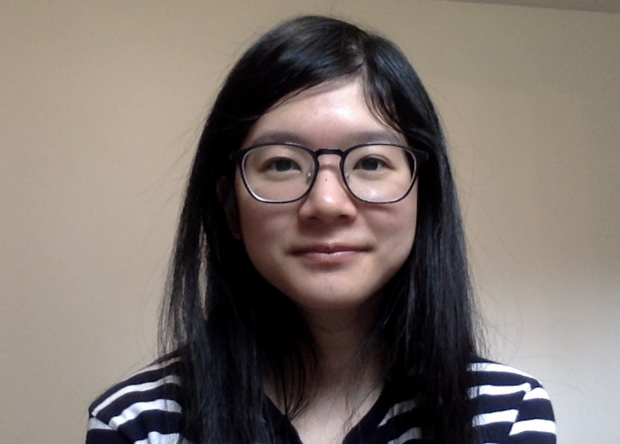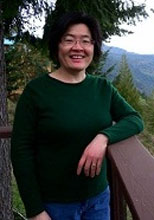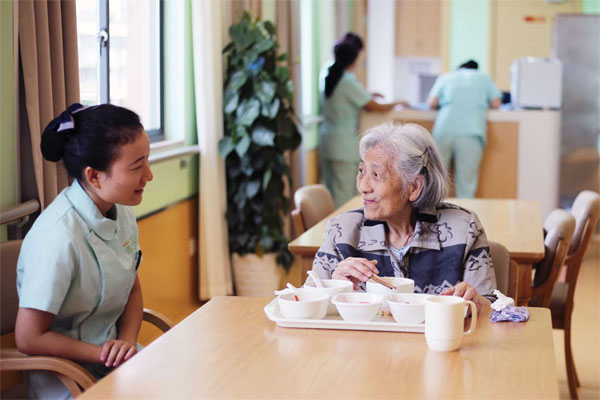Introduction
 The global Covid-19 pandemic has shone a spotlight on the dire conditions of long-term care facilities in many countries of the world. In Canada, especially in the provinces of British Columbia, Ontario and Quebec, long-term care facilities were hardest hit, with fatalities of seniors in these facilities taking up about 82% of the national total by early summer 2020.[i]
The global Covid-19 pandemic has shone a spotlight on the dire conditions of long-term care facilities in many countries of the world. In Canada, especially in the provinces of British Columbia, Ontario and Quebec, long-term care facilities were hardest hit, with fatalities of seniors in these facilities taking up about 82% of the national total by early summer 2020.[i]  The pandemic brought the profit-making model of many of Canada’s long-term care facilities, especially in its impact on how care is organized and staffed, under microscopic examination, and has led to calls from some quarters for a turn to a public model. [ii]
The pandemic brought the profit-making model of many of Canada’s long-term care facilities, especially in its impact on how care is organized and staffed, under microscopic examination, and has led to calls from some quarters for a turn to a public model. [ii]
With these controversies shaping the country where we live, we turn our attention to eldercare during the pandemic in China and Singapore. Both countries adopted lockdowns to stop the domestic spread of the virus. Although many observers consider this to have been a successful strategy, we argue that the Covid-19 pandemic also sheds light on the profit-making model of eldercare that also prevails in both of these countries, a model which also has made eldercare workers invisible and devalued in the public realm.
How care is organized and staffed
Both Chinese and Singaporean populations are aging rapidly due to increased life expectancies and medical advances. China’s one-child policy has left a distinctive demographic mark, most notably in the major urban centres where the policy was enforced most markedly. For its part, Singapore has seen below-replacement fertility rates since the 1980s. As with other advanced industrialized countries, Singaporean women since the late 1970s have been entering the professional workforce at unprecedented rates. But these women traditionally occupied unpaid housewife roles and were typically the family members left in charge of informal caregiving for elderly dependents.[iii] Their turn to the paid workforce greatly increased the demand for paid eldercare workers. In China, the post-revolutionary norm of both men and women participating in the paid workforce instituted a parallel change much earlier, especially in urban areas. The more recent transition to a market economy, together with rapid internal migration and urbanization, has therefore been the main driver there behind the increased demand for paid eldercare workers.
In the fully urbanized city-state of Singapore, this shortage in eldercare was met with the heavy importation of live-in Foreign Domestic Workers (FDWs) from approved source countries, while in China, rural migrants and urban poor are the main eldercare workforce.
In both countries, international pressure to liberalize and privatize the economy in recent decades have led to significant changes in the Confucian tradition of filial piety as the imperatives of modernization and capital accumulation take hold. Despite an extended phase of official disapproval in Maoist China towards the Confucian legacy, a move that itself was considered to be a radical transition to modernity, both countries’ policymakers and publics have until recently continued to see the immediate family as the primary caregiving unit and institutional options as a secondary or last resort. In the Maoist period, although an official anti-Confucian line prevailed, the revolutionary norm of both men and women working outside the home with little state or societal care provisions meant that a functional equivalent to Confucian inter-generational obligations continued under another name. While letting the free market take precedence, the Chinese government now presents itself as more actively involved in eldercare provision compared to the self-presentation of Singapore government, even as China has returned to a more pro-Confucian official stance on familial responsibilities. Despite boasting a large public sector, Singapore has left much of the domain of social policy up to laissez-faire mechanisms to an extent that would likely surprise an observer from the P.R. China.[iv]
Scholars have also coined the concept of ‘descending familialism’ to describe the drastic changes that have occurred to values of filial piety in China,[v] which warrants empirical research of the concept’s applicability to other Confucian-based societies. In China at least, this has meant a shift from prioritizing the authority of elders to the leadership of young and middle-aged adults within the family unit, all the while retaining a sense of obligation of younger generations to their elders. In China, adults with elderly parents have reformulated this principle to suit their life circumstances, for instance, in the case of domestic or international migration, by justifying their physical absence with financial support. In Singapore, filial piety has never really taken on the intense loyalty as it has in China, largely as a result of the state’s individualist ethos when it comes to promoting welfare practices. This detachment with filial piety, despite being a Confucian-based Chinese majority population, has got to do with Singapore’s multiracial immigrant composition. The question of national identity and statist consciousness could not be solved in the primordial way as the presence of multiple ethnicities did not provide recourse to any notions of ancestral myth. The discourse of ‘multicultural’ was used to address Singaporeans who fell into reductive categories of Chinese, Malay, Indian and Others yet united by a sense of economic imperative driven by the island’s geopolitical precarity.[vi] This also meant steering clear of becoming a ‘third China’ and establishing for Singapore herself a set of distinct shared values that emphasized communal over individual interests. While the significance of the family for eldercare was stressed, the doctrine of filial piety itself was given scarce attention except with reference to the financial duty of adult children.[vii] Overall, the individual has an onus of healthy ageing followed by the family who has the obligation of being the primary caregiving unit. Residing in nursing homes connotes shamefulness and social stigma, such that keeping the elderly within the household matters more than the actual quality of care or the caregiver-recipient relationship.
In contrast to the (re)privatization of eldercare sector in Canada and in other Western countries, all this has meant in China that an eldercare market had to be created from scratch in the face of the mounting insufficiency of household provision. The result has been a sector heavily marked by for-profit and private provision, in a policy context that the state actively shapes. A rapidly aging population drives this need, especially in large cities such as Shanghai. Under the Chinese government’s embrace of New Public Management (NPM) principles of governance, it chose to occupy a more limited and pro-entrepreneurial role in allowing Public-Private Partnerships (PPPs) to dominate the eldercare market.[viii] The Central Party assists through subsidies and preferential taxes while maintaining multiple sites of eldercare provision in a “9:7:3” model (sic). That is, home-based care accounts for 90%, community-based care (daycare, canteens, meals on wheels programs) account for 7%, and finally institutional options (seniors’ homes and hospital care) take up 3%.
The institutional structure of paid care is more complicated and goes beyond public and private types. In particular, China has fostered publicly owned but minjian (non-profit)-operated models, and privately owned but publicly subsidized ones. Under these arrangements, however, eldercare workers themselves are disadvantaged in social and urban policy. Bureaucratic rules encourage local officials to build public seniors’ homes, since their annual performance evaluations include paid eldercare work. This is an easier task to document compared to other performance requirements, such as improving working conditions and wages, and therefore often gets priority. Discussions of care workers emphasize the quality of their skills and training, rather than human needs. [ix]
Eldercare workers in urban China are mostly women internal migrants who hold rural household registration (hukou) status.[x] Other parts of this workforce are working-class women laid off from state-owned or collective-owned enterprises, or women who have lost their rural land parcels to urban expansion. Most have entered their forties and fifties with little certainty for their own future care. Many opt for live-in arrangements in senior care homes, due to the exorbitant rents and transportation costs in the major cities.
By contrast, the Singapore state has adopted a much more hands-off and step-down approach in maintaining a family-centered yet market-based model of eldercare provision. Many international observers of this authoritarian ‘nanny’ regime may express surprise at its strong aversion to ideas of the welfare state.[xi] Indeed, the state’s public housing policy promoted the intergenerational family unit through preferential subsidies for householders living with both young and elderly dependents. The three-generation family (san dai tong tang) was viewed as the best cost-containment strategy for the state in public welfare expenditure: it channeled the duty of eldercare to immediate kin. In stark opposition to its East Asian NIC counterparts, Japan and South Korea, which have nationalized their care workforce with robust public provision of in-kind eldercare services,[xii] the Singapore state has opted to institutionalize informal caregiving in the nuclear family, by the latter employing FDWs in a variety of easily accessed labour markets. The establishment of a nation-wide compulsory savings scheme, the Central Provident Fund (CPF), for all Singaporeans to use for housing and retirement costs meant that families often worked toward purchasing housing as a collective. Public housing controlled by the Housing Development Board (HDB) has achieved an unparalleled degree of normalization in the city-state with well above 90% of the population residing in HDB flats.[xiii] The CPF funds of elderly are often depleted from having used them to pay for the education of younger generations and for housing instalments, hence adult children have every incentive to reciprocate by providing in-home care. In this sense the institutionalization of the care unit in the form of households replaces the state’s responsibility of public provision. The collective purchase of HDB flats on the part of intergenerational family members, who then house their elderly ones at home by hiring live-in FDWs, compensates for state coverage. Due to an aggressive medicalization of hospitals especially since the 1990s,[xiv] the profit-making demands of geriatric specialists in hospitals accept only wealthier patient classes. The state provides no direct in-kind provision except for the mandatory CPF savings scheme; instead, Voluntary Welfare Organizations (VWOs), charities and grassroots community initiatives shoulder all demands of long-term residential nursing homes, daycare services and food delivery programs, among other services. It is rather unusual to think of FDWs as eldercare givers because their colloquial reputation as maids seem to indicate that they are primarily responsible for household chores, especially cleaning and cooking work that is no longer done by working women. However, recent surveys reveal that close to half of those aged 60 and above have migrant domestics as their primary caregivers.[xv] This amounts to a deinstitutionalization of eldercare from public facilities as a cost containment strategy for fiscal planning, with a key side effect being a vast informal eldercare sector that is not codified. The informal character of these labour markets allows employer families to take advantage of any previous working experience and care training that FDWs have been through in more formal agencies, while not extending basic employment provisions and human rights that Singaporean employees would normally enjoy. Migrant healthcare workers in hospitals and nursing homes also enter Singapore as work permit holders who have been through more rigorous licensing tests beyond those of maid agencies, but with a crucial difference: they are covered under national labor laws, as specified in the Employment of Foreign Manpower Act.
In both countries, the eldercare workforce consists predominantly of migrant women, whether that migration is domestic or international. The Chinese government’s hukou policy has historically segregated migrant labor from the urban workforce by systematically excluding the former from basic welfare entitlements and housing rights: the latter derive mainly from urban work-units (danwei) or municipal and regional state provision on the basis of formal residency, rather than on the basis of either provincial residency or national citizenship. Paid eldercare is generally held in low regard as an occupation by more well-to-do urbanites in China. The same is true in Singapore’s predominantly tertiary workforce, who sees this work as belonging to the “3D” category (dirty, dangerous, demeaning). Most women migrants choose this less desirable occupation, not by preference, but by necessity. FDWs in Singapore go through some rudimentary care training in agencies and may or may not be required to perform caregiving at clients’ home. As a licensing requirement, agencies typically provide all trainees with a set number of hours of eldercare training in preparation for domestic employment. The actual range of tasks required of the FDW however depends on the household needs of the employer, which are not always specified before the worker moves in. Often the decision to migrate and move into domestic care work is triggered by a loss of income due to restructuring of state-owned or collectively-owned enterprises and lost rural property for domestic migrants in China. In Singapore, migrants often cite a care crisis in their home, such as the need to finance the education of younger siblings or the onset of grave illnesses of elderly parents, as primary reasons for moving overseas. Recruitment agencies in both countries actively scout for migrant women who fit these profiles and channel them into paid eldercare, while in Singapore FDWs are matched to households at the discretion of middlemen recruiters. In China, community/shequ (urban government organ) staff recruit the unemployed to work as paid eldercare workers in public or publicly owned, but operated by minjian (NGO/NPO).
Singapore’s family-centered yet market-based model of eldercare has the highest consequences for live-in migrant eldercare-workers. The latter shield the government from spending the billions otherwise required to expand public eldercare services. In Singapore, eldercare workers working in homes are not considered public sector employees. In China, eldercare workers working in homes or public care homes are not considered public employees. As long as the reproductive work they are doing is not valued as real work or as the primary concern of public authorities, both unpaid and paid caregivers will not be recognized for their actual contributions to the economy.
Lynn Yuling Ng and Dr. Feng Xu are both with the Department of Political Science, UVic.
[i] Tonda MacCharles, “82% of Canada’s COVID-19 Deaths Have Been in Long-Term Care, New Data Reveals,” The Star, 2020, https://www.thestar.com/politics/federal/2020/05/07/82-of-canadas-covid-19-deaths-have-been-in-long-term-care.html.
[ii] Andrew Longhurst and Kendra Strauss, “Time to End Profit-Making in Seniors’ Care,” Policynote: A Progressive Take on BC Issues, April 22, 2020, https://www.policynote.ca/seniors-care-profit/.
[iii] Ngo, Hang-Yue. “Women and Employment in Asian Newly-industrialised Countries.” International Journal of Employment Studies 5, no. 1 (1997): 67.
[iv] Teo, Peggy, Kalyani Mehta, Leng Leng Thang, and Angelique Chan. Ageing in Singapore. Routledge, 2006.
[v] Yan, Yunxiang. “Intergenerational intimacy and descending familism in rural north China.” American Anthropologist 118, no. 2 (2016): 244-257.
[vi] Hill, Michael, and Kwen Fee Lian. The politics of nation building and citizenship in Singapore. Routledge, 2013, 9.
[vii] Rozario, Philip A., and Song-Iee Hong. “Doing it ‘right’ by your parents in Singapore: A political economy examination of the Maintenance of Parents Act of 1995.” Critical Social Policy 31, no. 4 (2011): 607-627.
[viii] For more details, please see Kendra Strauss and Feng Xu, “What We Talk About When We Talk About Austerity: Social Policy, Public Management and Politics of Eldercare Funding in Canada and China,” in Working in the Context of Austerity, eds., Donna Baines and Ian Cunningham (Bristol: University of Bristol Press, 2020).
[ix] Kendra Strauss and Feng Xu, “At the Intersection of Urban and Care Policy: The Invisibility of Eldercare Workers in the Global City,” Critical Sociology 44, no. 7–8 (November 1, 2018): 1163–78.
[x] Hukou creates welfare inequalities that favor urban hukou holders.
[xi] Hill, Michael, and Kwen Fee Lian. The politics of nation building and citizenship in Singapore. Routledge, 2013.
[xii] Peng, Ito. “Shaping and reshaping care and migration in East and Southeast Asia.” Critical Sociology 44, no. 7-8 (2018): 1117-1132.
[xiii] Mehta, Kalyani K. “A critical review of Singapore’s policies aimed at supporting families caring for older members.” Journal of Aging & Social Policy 18, no. 3-4 (2006): 53.
[xiv] Teo, Peggy, Kalyani Mehta, Leng Leng Thang, and Angelique Chan. Ageing in Singapore. Routledge, 2006, 40.
[xv] Huang, Shirlena, Brenda SA Yeoh, and Mika Toyota. “Caring for the elderly: the embodied labour of migrant care workers in Singapore.” Global Networks 12, no. 2 (2012): 195-215.
